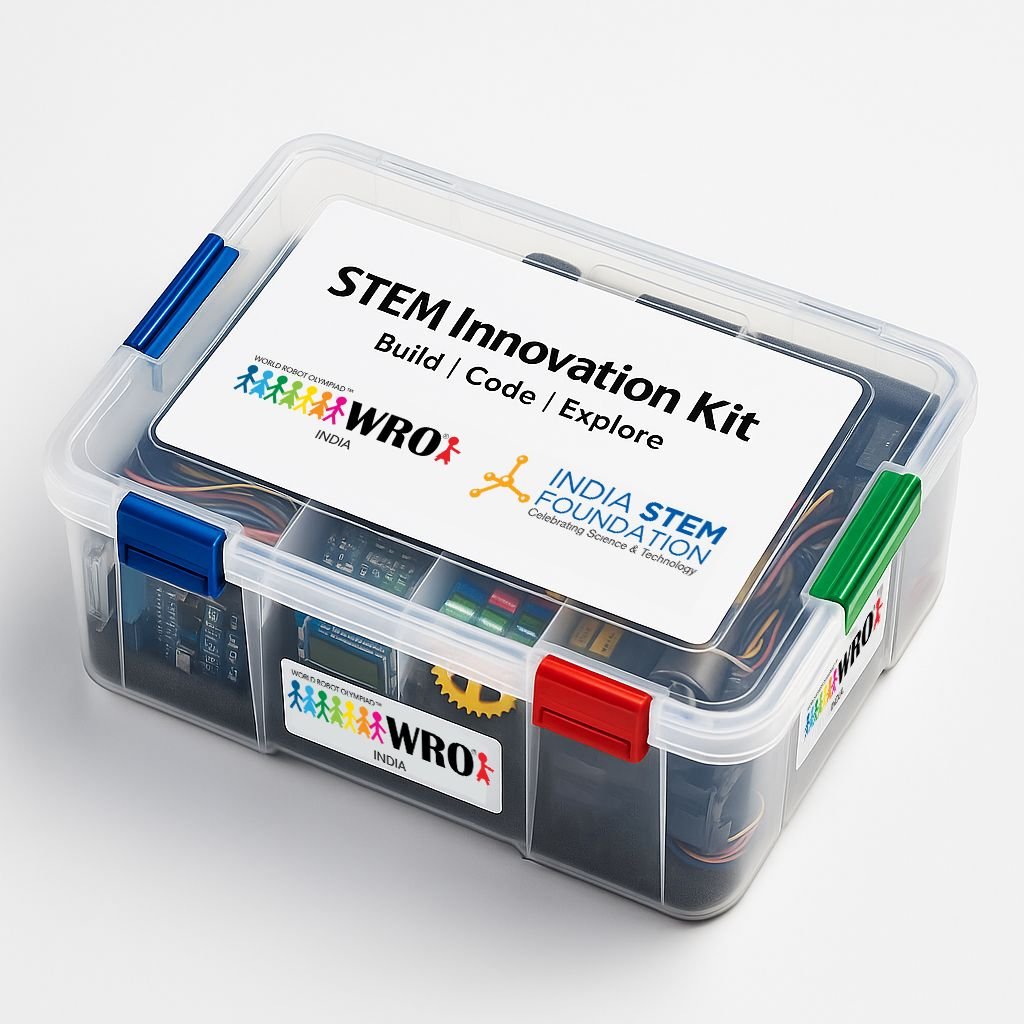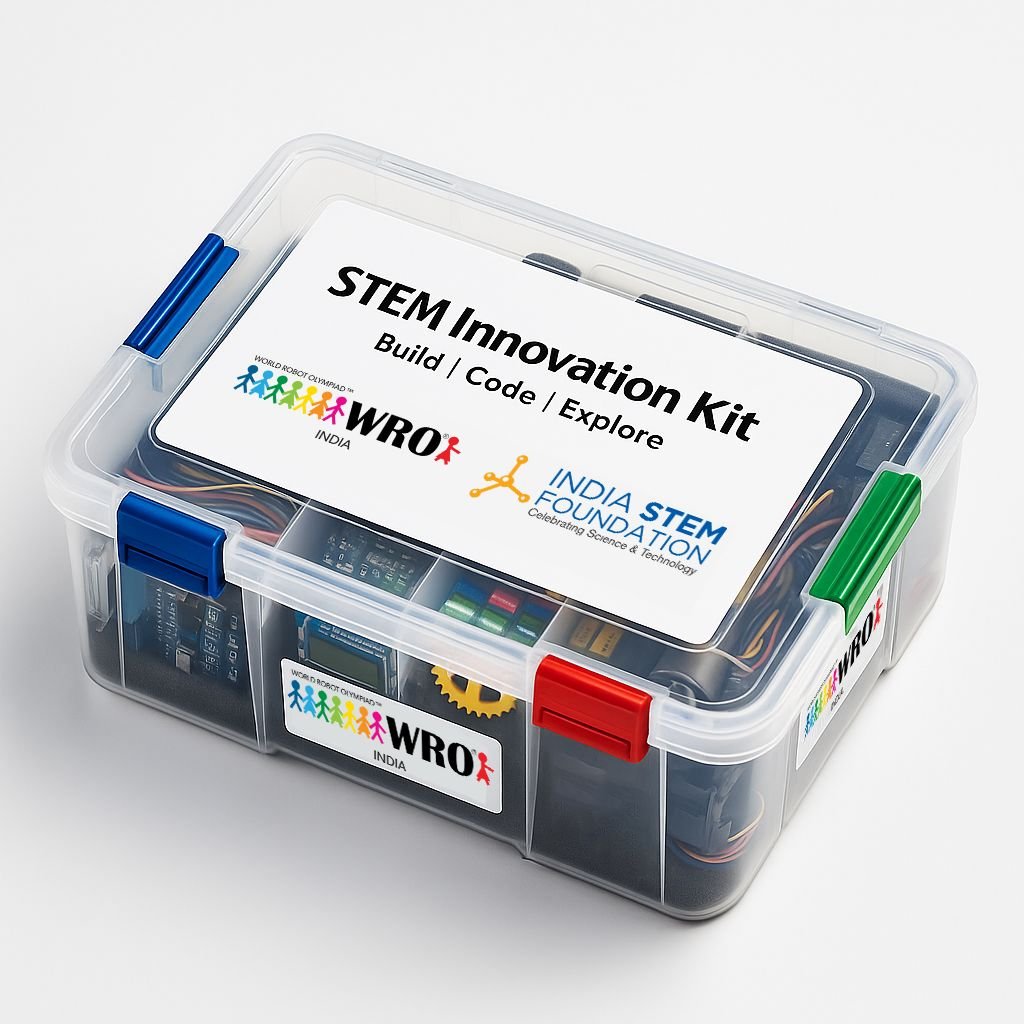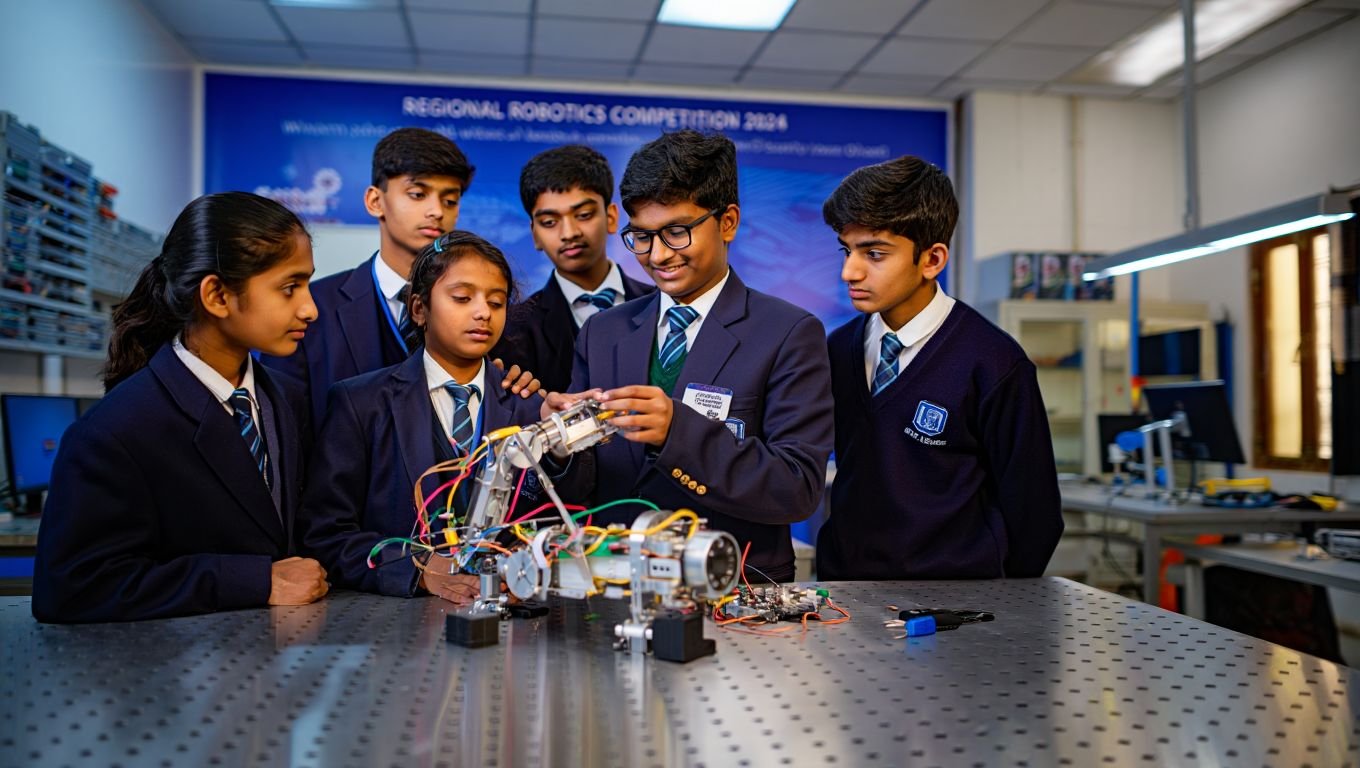Introduction to ATAL Tinkering Lab
The Atal Tinkering Labs, an initiative under the Atal Innovation Mission (AIM) by the Government of India, aim to foster innovation and creativity among students by providing them with state-of-the-art tools and an enabling environment. As of December 2024, the government has extended the mission until March 2028, with a substantial budget to strengthen India’s innovation ecosystem.
Atal Tinkering Labs are specialized innovation workspaces established in schools across the country to nurture curiosity and hands-on learning in science, technology, engineering, and mathematics (STEM). These labs are equipped with advanced tools like 3D printers, robotics kits, and Internet of Things (IoT) devices, empowering students to experiment and devise innovative solutions for real-world challenges.
With over 10,000 Atal Tinkering Labs established nationwide, engaging over 1.1 crore students, the initiative has transformed the educational landscape. The labs emphasize inclusivity, with over 60% in government schools and 96% in co-educational or girls’ institutions, ensuring widespread access to STEM innovation opportunities.
What is an ATAL Tinkering Lab?
Atal Tinkering Labs are dynamic innovation centers established in schools across India as part of the Atal Innovation Mission (AIM), a flagship initiative of the Government of India. These labs aim to ignite curiosity and creativity in students by offering them a hands-on experience with cutting-edge technologies. Equipped with tools such as 3D printers, robotics kits, microprocessors, and IoT devices, the labs provide an immersive environment for students to explore, experiment, and innovate. By integrating science, technology, engineering, and mathematics (STEM) into practical learning, Atal Tinkering Labs empower young minds to develop problem-solving abilities and a spirit of entrepreneurship.
Main Objective of Atal Tinkering Labs
The primary objective of Atal Tinkering Labs is to cultivate a mindset of innovation and entrepreneurship in young learners. The initiative aims to:
Foster Creativity and Critical Thinking: Encourage students to experiment, innovate, and develop solutions for real-world challenges.
Promote STEM Learning: Make science and technology more engaging by offering a hands-on learning environment.
Empower Problem-Solving Skills: Instill adaptive and computational thinking skills among students to tackle 21st-century challenges.
Ensure Inclusivity: Provide access to quality STEM education for students across all sections of society, especially in government and rural schools.
Through Atal Tinkering Labs, India aims to create a generation of young innovators ready to contribute to the nation’s growth and global advancements.
The Role of Tinkering Labs in STEM Education
Atal Tinkering Labs have become a cornerstone in transforming STEM education in India. By 2024, more than 10,000 such labs have been established across the country, engaging over 1.1 crore students in hands-on, experiential learning. These labs, an initiative under the Atal Innovation Mission, are designed to cultivate creativity, critical thinking, and problem-solving skills by providing students with access to advanced tools like 3D printers, robotics kits, and Internet of Things devices. Importantly, over 60% of the Atal Tinkering Labs are located in government or government-aided schools, ensuring widespread accessibility, and 96% of them are in co-educational or girls’ institutions, promoting inclusivity and gender equity. By encouraging students to work on innovative solutions to real-world challenges, Atal Tinkering Labs enhance STEM literacy and inspire many young minds to consider STEM careers, contributing to the creation of a skilled and innovation-focused workforce.
Importance of ATAL Tinkering Labs
Atal Tinkering Labs are more than just educational spaces. They are platforms for young minds to think creatively, innovate fearlessly, and build solutions that shape the future. By fostering inclusivity, promoting STEM learning, and nurturing entrepreneurial skills, these labs are ensuring India’s leadership in the global innovation landscape.
Democratizing Access to Innovation
- Over 10,000 Atal Tinkering Labs have been established across India, ensuring widespread access.
- More than 60% of these labs are in government or government-aided schools, providing opportunities to students from diverse socio-economic backgrounds.
- 96% of the labs are in co-educational or girls’ institutions, promoting inclusivity and gender equality.
Promoting a Design Thinking Mindset
- Atal Tinkering Labs encourage students to identify real-world problems and develop innovative solutions.
- Examples of student-led innovations include affordable assistive devices for the differently-abled and sustainable energy models for rural areas.
- This focus on creativity and critical thinking equips students with essential skills to tackle 21st-century challenges.
Complementing STEM Labs and Roboshiksha Kendras
- Atal Tinkering Labs align with the objectives of STEM Labs and Roboshiksha Kendras by integrating robotics, coding, and automation into school curriculums.
- These labs enhance computational thinking, technical expertise, and adaptability to future technology-driven industries.
- Tools and mentorship available in these labs foster a practical understanding of engineering and innovation.
Driving National and Global Innovation Goals
- Atal Tinkering Labs serve as incubators for future entrepreneurs and innovators.
- They contribute to India’s vision of fostering a robust startup ecosystem and achieving technological self-reliance.
- By nurturing talent from an early age, these labs help position India as a global leader in innovation and economic growth.
How to Make the Most of a Atal Tinkering Lab
Atal Tinkering Labs are designed to nurture creativity and innovation in students by providing them with the tools and environment to explore STEM concepts practically. To maximize the opportunities these labs offer, students can follow these steps:
Engage Actively
- Participate regularly in activities, workshops, and competitions hosted by the lab.
- Experiment with tools like 3D printers, robotics kits, microcontrollers, and IoT devices to understand their practical applications.
Focus on Learning by Doing
- Use the lab’s resources to work on hands-on projects, applying theoretical knowledge to real-world problems.
- Explore areas of interest such as coding, robotics, electronics, or design thinking.
Collaborate with Peers
- Work on group projects to learn teamwork and exchange ideas.
- Share your knowledge and learn from others to improve your problem-solving and communication skills.
Seek Guidance from Mentors
- Take advantage of the guidance provided by teachers and external mentors available in the lab.
- Ask questions, seek advice on projects, and gain insights into advanced concepts.
Participate in Innovation Challenges
- Enroll in national and global competitions, hackathons, or challenges hosted by Atal Innovation Mission or other organizations.
- Use these platforms to showcase your innovative solutions and gain recognition.
Focus on Real-World Problem Solving
- Identify problems in your community or environment and use the lab’s resources to develop solutions.
- Create prototypes and test their effectiveness to learn the process of innovation.
Develop Technical and Soft Skills
- Learn technical skills such as programming, circuit design, and prototyping using lab equipment.
- Enhance soft skills like critical thinking, time management, and project presentation to stand out in STEM fields.
Stay Curious and Consistent
- Explore emerging technologies such as artificial intelligence, machine learning, and renewable energy through the lab.
- Dedicate consistent time to tinkering and experimenting to build confidence and expertise.
By actively participating and leveraging the resources available in Atal Tinkering Labs, students can cultivate a mindset of innovation, prepare for STEM careers, and make meaningful contributions to their communities
Project Ideas for Tinkering Labs
STEM Tinkering Labs, such as Atal Tinkering Labs, serve as vibrant hubs for innovation, enabling students to bridge theoretical concepts with practical applications. These labs inspire a multitude of project ideas that address real-world challenges and societal needs while fostering creativity, problem-solving, and technological expertise.
One impactful project idea is the development of a smart irrigation system using Internet of Things (IoT) technology. By monitoring soil moisture and automating watering processes, students can create a sustainable solution for water conservation in agriculture. Another idea is designing health monitoring wearables, such as wristbands equipped with sensors to track vitals like heart rate, blood pressure, and temperature, providing real-time health data that could benefit patients and healthcare providers.
Students can also explore renewable energy solutions by building solar-powered devices or small-scale wind turbines, emphasizing the importance of eco-friendly alternatives to traditional energy sources. Creating assistive technologies for differently-abled individuals, such as smart walking sticks or robotic arms, can make a tangible societal impact, promoting inclusivity and accessibility.
AI-powered chatbots offer an exciting avenue for education, allowing students to develop interactive tools that provide personalized learning experiences for their peers. Tackling environmental concerns, students can prototype recycling solutions, such as machines or mobile apps that segregate and process waste efficiently, helping reduce pollution. Additionally, projects focusing on disaster management systems, like drones or robots for search-and-rescue missions, highlight the potential of technology to save lives during emergencies.
These diverse projects allow students to explore emerging technologies while addressing pressing global challenges. STEM Tinkering Labs not only nurture technical skills but also in still a sense of social responsibility and innovation. Through these experiences, young learners are prepared to become the problem-solvers and innovators of tomorrow.
Robo Siksha Kendra by India STEM Foundation to promote Atal tinkering labs
Robo Siksha Kendra, an initiative by the India STEM Foundation, is a pioneering program aimed at revolutionizing STEM education in India through the integration of robotics and hands-on learning. These specialized centers focus on fostering creativity, critical thinking, and problem-solving skills among students by providing them with access to state-of-the-art robotics kits, programming tools, and expert guidance. The initiative seeks to bridge the gap between theoretical learning and practical application, empowering students to explore and innovate in the fields of science, technology, engineering, and mathematics. At Robo Siksha Kendras, students are introduced to advanced concepts such as automation, artificial intelligence, and IoT, allowing them to stay ahead in the rapidly evolving technological landscape.
The program also emphasizes inclusivity by ensuring access for students from diverse socio-economic backgrounds, promoting equity in STEM education. Through workshops, competitions, and mentorship programs, Robo Siksha Kendras inspire young learners to apply their knowledge to real-world challenges. By working on robotics projects, students develop critical 21st-century skills, including teamwork, computational thinking, and design thinking. The centers also serve as platforms for students to showcase their innovations at national and international robotics competitions, encouraging global exposure and collaboration. Ultimately, Robo Siksha Kendra is shaping a generation of tech-savvy individuals equipped to contribute to India’s vision of becoming a global leader in technology and innovation
Benefits of Robo Siksha Kendra which promotes STEM labs
The impact of Robo Siksha Kendra extends beyond individual student growth. It plays a pivotal role in building a skilled and innovative workforce essential for driving technological advancement and economic development in India. Furthermore, the program emphasizes inclusivity by ensuring that students from diverse socio-economic backgrounds can access high-quality STEM education, promoting equity and opportunity.
Partnerships with industries and corporations have significantly supported the program’s expansion, enabling schools to establish well-equipped centers and provide students with mentorship. Robo Siksha Kendra has transformed STEM education by fostering innovation, inclusivity, and a practical approach to learning, contributing to a brighter future for India’s youth.
Hands-On Learning
Hands-on learning is an educational approach that emphasizes active participation and practical engagement over passive listening or rote memorization. It involves students directly interacting with tools, materials, or real-world scenarios to gain a deeper understanding of concepts. This method allows learners to “learn by doing,” fostering experiential knowledge that often leads to better retention and comprehension.
Hands-on learning involves activities like building models, conducting experiments, programming robots, or designing prototypes. For example, students in a Robo Siksha Kendra might use robotics kits to assemble and program a robot, applying their knowledge of physics, mathematics, and coding in the process. This immersive engagement helps bridge the gap between theoretical concepts and their practical applications.
Skill Development
Robo Siksha Kendra plays a pivotal role in fostering essential skills among students, preparing them for the demands of a rapidly evolving technological world. By engaging with advanced robotics tools, programming platforms, and hands-on projects, students develop critical technical skills such as coding, automation, and engineering design. The collaborative nature of activities in these centers enhances teamwork and communication abilities, while problem-solving challenges encourage logical thinking and adaptability. Moreover, working on real-world projects sharpens creativity and innovation, enabling students to devise unique solutions to pressing issues. Through workshops, mentorship, and competitions, students also build soft skills like time management, leadership, and presentation, which are vital for academic and professional success. The immersive and interactive environment of Robo Siksha Kendra ensures that students gain not only technical proficiency but also the confidence and resilience needed to thrive in STEM fields, shaping them into future-ready individuals.
Innovation and Creativity
Innovation and creativity are at the heart of the Robo Siksha Kendra initiative, empowering students to think beyond traditional boundaries and develop groundbreaking solutions to real-world problems. These centers provide a platform where students can experiment with cutting-edge technologies like robotics, artificial intelligence, and IoT, encouraging them to turn their imaginative ideas into tangible projects. For instance, students can design assistive robots for differently-abled individuals, automate farming solutions, or create smart systems for energy efficiency. By fostering a hands-on learning environment, Robo Siksha Kendras inspire learners to approach challenges with a problem-solving mindset and explore new ways to integrate technology into everyday life. The emphasis on innovation nurtures entrepreneurial thinking, while creativity allows students to design user-centric solutions that are practical and impactful. This combination not only prepares them for future technological advancements but also contributes to societal progress by addressing community-specific needs with ingenuity.
Career Preparation
Robo Siksha Kendra plays a pivotal role in preparing students for careers in the rapidly evolving fields of science, technology, engineering, and mathematics (STEM). By providing hands-on experience with robotics, programming, and emerging technologies like IoT and artificial intelligence, these centers equip students with technical skills that are highly sought after in today’s job market. Beyond technical expertise, the program fosters critical thinking, creativity, and problem-solving abilities, which are essential for navigating complex challenges in professional environments. Students gain exposure to real-world applications through projects, competitions, and industry-aligned curricula, enabling them to bridge the gap between academic knowledge and workplace demands. Moreover, the mentorship and collaboration opportunities provided at Robo Siksha Kendras enhance teamwork, communication, and project management skills, preparing students to excel in collaborative, technology-driven careers. By nurturing innovation and adaptability, Robo Siksha Kendra empowers students to pursue diverse career paths in robotics, automation, engineering, software development, and beyond, positioning them as future-ready professionals in a competitive global economy
Global Exposure
Global exposure, in the context of Robo Siksha Kendra, refers to the opportunity for students to engage with international robotics competitions, workshops, and collaborative projects, broadening their understanding of global technological trends and innovations. Through these centers, students gain access to platforms where they can showcase their robotics projects, connect with peers and experts from different parts of the world, and exchange ideas on solving common challenges. This exposure helps them stay ahead of technological advancements, understand global market needs, and gain insights into emerging trends like artificial intelligence, machine learning, and automation. Additionally, participating in global competitions provides students with a sense of achievement, boosts their confidence, and fosters a global mindset, preparing them to contribute to technological solutions on a worldwide scale. Robo Siksha Kendra thus not only enhances local learning but also equips students with the skills, knowledge, and global network necessary to thrive in the ever-evolving tech industry.
Industry Collaboration
Industry collaboration is a key component of the success of Robo Siksha Kendra, as it connects students with real-world expertise, resources, and mentorship. By partnering with leading companies, Robo Siksha Kendra is able to provide students with access to state-of-the-art robotics kits, advanced programming tools, and the latest technologies. This collaboration ensures that students are not only learning theoretical concepts but also gaining hands-on experience with the tools and techniques used in the industry. Mentorship from industry professionals further enriches the learning experience, helping students apply their knowledge to solve practical challenges. Additionally, these partnerships offer students opportunities to participate in national and international robotics competitions, expanding their exposure and networking. Ultimately, industry collaboration enhances the overall quality of education at Robo Siksha Kendra, equipping students with both the technical skills and the innovative mindset required to succeed in a fast-paced, technology-driven world.
Community Empowerment
Community empowerment refers to the initiative’s ability to inspire and equip students to use their knowledge and skills to address local and societal challenges. By providing students with access to advanced tools and robotics kits, Robo Siksha Kendra encourages them to create innovative solutions for problems within their communities, such as developing sustainable energy systems, creating assistive technologies for the differently-abled, or designing disaster relief tools. This empowerment extends beyond just individual growth, as students are motivated to apply their learning to improve their surroundings and contribute to societal well-being. The program also fosters collaboration among students, teachers, and local stakeholders, building a network of problem-solvers within the community. Ultimately, Robo Siksha Kendra instills a sense of social responsibility in young learners, preparing them to take leadership roles in their communities and make a positive impact through technology and innovation.
Conclusion
The India STEM Foundation’s creation of Robo Siksha Kendra is significantly reshaping education in India, especially in the fields of STEM. By providing students with access to advanced robotics tools and hands-on learning experiences, the initiative fosters innovation, critical thinking, and problem-solving. With more than 2,000 schools across the country now involved, Robo Siksha Kendra has impacted over 500,000 students and educators, providing them with the necessary skills to succeed in a rapidly evolving technological landscape. The program promotes inclusivity, ensuring students from various socio-economic backgrounds have equal opportunities to thrive in STEM education.
Additionally, Robo Siksha Kendra encourages students to develop solutions to local community challenges, enhancing their sense of social responsibility and leadership. By bridging the gap between theoretical knowledge and real-world application, the program plays a crucial role in preparing India’s future workforce for the global digital economy. As the initiative expands, it continues to position India as a hub for innovation, technological advancement, and skilled professionals, making it an integral part of the nation’s growth and development.



